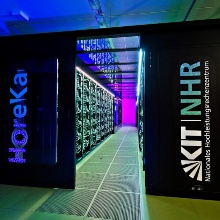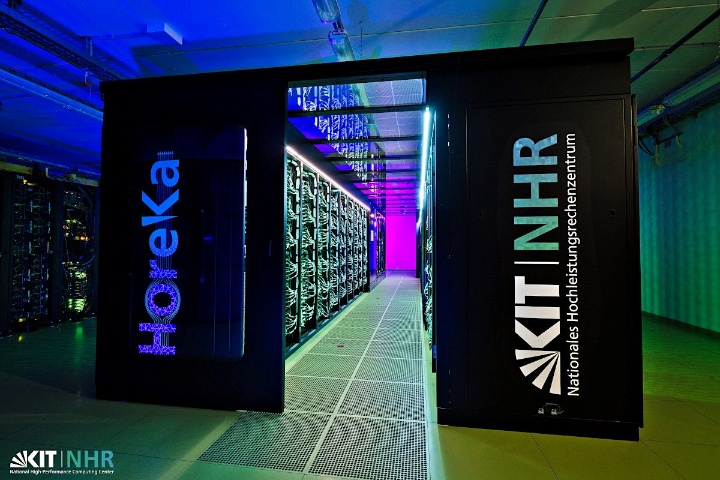In order to shed light on the molecular mechanisms of the intimate interactions among the pro- and anti-apoptotic members of the Bcl-2 protein family, deciding about cell fate, Kristyna Pluhackova, Junior Research Group Leader in SimTech, has been granted computer time on the Supercomputer HoreKa at KIT.
In the project titled "Live or let die: Bcl-2 protein transmembrane domain interactions in apoptosis signalling" the Junior Research Group for Molecular Dynamics led by Kristyna Pluhackova will investigate the interactions of pro- and anti-apoptotic members of the Bcl-2 family governing mitochondrial outer membrane permeabilization, which results in cytochrome C release and ultimately apoptotic cell death.
Since recently, pioneering pieces of evidence suggest that the regulation of the apoptotic signalling is fine-tuned by the interactions between the transmembrane domains anchoring the Bcl-2 proteins to the mitochondrial outer membrane and other cellular membranes. However, the molecular details and determinants remain hidden to experiments. Thus, here, multiscaling molecular dynamics simulations, consisting of spontaneous association of transmembrane domains embedded in native-like membrane model at coarse-grained resolution, resolution transformation to atomistic resolution and refinement of most often occurring interaction interfaces in atomistic simulations, will complement the experimental investigations of Tobias Beigl and Dr. Frank Essmann at the Institute for clinical Pharmacology, Stuttgart.
The joint efforts aim at shedding light on the molecular mechanisms of function with focus on e.g. a prominent pro-apoptotic BCL-2 protein, BOK, and its possible regulation by anti-apoptotic proteins.
“Hochleistungsrechner Karlsruhe” – HoreKa for short – is situated at the Karlsruhe Institute of Technology. It is an innovative hybrid system with almost 60.000 Intel Xeon "Ice Lake" Scalable Processor cores, 220 terabytes of main memory as well as 668 NVIDIA A100 Tensor Core GPUs. A non-blocking NVIDIA Mellanox InfiniBand HDR network with 200 GBit/s per port is used for communication between the nodes. Two Spectrum Scale parallel file systems offer a total storage capacity of more than 16 petabytes.



